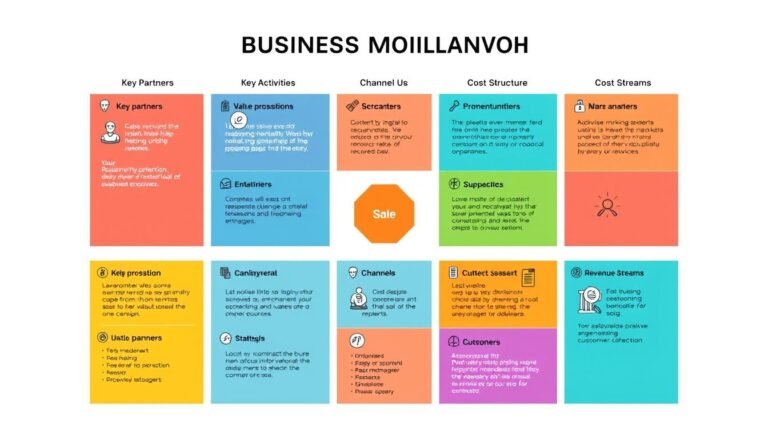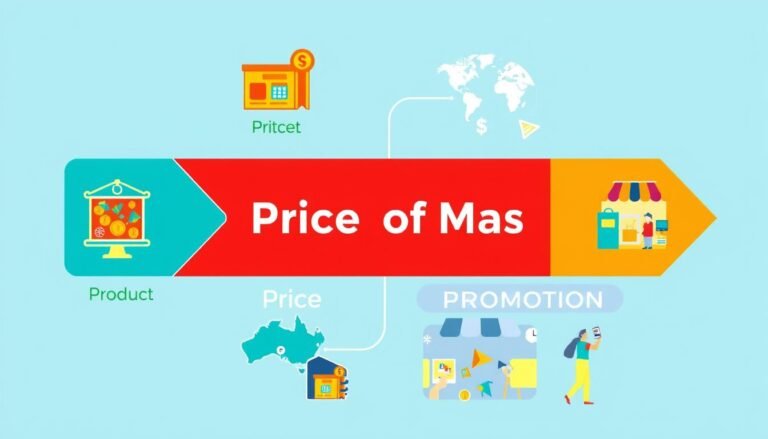Aaker’s Brand Equity Model Explained | Deep Dive
What if the secret to huge growth and customer loyalty isn’t just in your products? It’s in how your brand connects with people. The Brand Equity Model (Aaker), by marketing expert David Aaker, explores this idea. It shows how a brand’s value adds to its products, affecting its performance and branding strategies.
Strong brand equity can lead to a 20% growth edge and 33% more revenue than rivals. This model is key to understanding how brands work.
This guide will take you through Aaker’s model. We’ll look at brand loyalty, awareness, quality, and associations. You’ll see how these elements shape a brand’s identity and connect with customers in today’s market.
Key Takeaways
- The Aaker Brand Equity Model identifies five key dimensions of brand equity.
- Brand loyalty ranges from no loyalty to true loyalty.
- Awareness levels can significantly impact brand recognition.
- Aaker’s model assists in developing solid brand strategies and communications.
- Organizations with consistent branding enjoy substantial growth advantages.
- Understanding consumer perceptions can foster emotional connections and loyalty.
Understanding Brand Equity
Understanding brand equity means knowing what it is, why it matters, and what affects it. This knowledge helps businesses strengthen their market position and build strong relationships with customers.
Definition of Brand Equity
Brand equity comes from how people feel about a brand and their emotional ties to it. It goes beyond just what the product does. This shows how experiences influence what we buy. Brands with strong equity can charge more because customers stick with them.
Importance of Brand Equity
Brand equity is key for building loyalty, making people aware of the brand, and increasing its value. Trust in a brand is a big factor, with many people needing to trust a brand before buying from it. Brands with strong equity see real growth.
Factors Affecting Brand Equity
Several factors influence brand equity, including:
- Quality of products and services
- Level of brand awareness among consumers
- Customer experiences and satisfaction
- Advertising strategies and perceptions
- Company reputation and credibility
- Competitor activities in the market
- Historical context and brand consistency
Brands that consistently offer great experiences build strong brand equity over time. Good marketing and smart investments boost this value. This leads to better performance in many areas.
Components of the Brand Equity Model (Aaker)
Aaker’s Brand Equity Model sheds light on what makes a brand successful. It looks at brand loyalty, awareness, quality, and associations. These elements are key to a brand’s success in the market.
Brand Loyalty
Brand loyalty shows how much customers stick with a brand. It ranges from not caring to being deeply attached. Brands with loyal customers often see more repeat buys, lower marketing costs, and positive word-of-mouth.
Brands like Apple benefit from strong loyalty. This means they have a steady customer base and can attract new ones more easily.
Brand Awareness
Brand awareness is how well people know a brand. It’s about both recognizing and remembering the brand. Good marketing can make a brand stand out when people are deciding what to buy.
Aaker’s model says the strength of the brand name, how much customers like it, and if they consider buying it matter a lot. These factors help measure how well-known a brand is.
Perceived Quality
Perceived quality is what customers think of a brand’s quality. Brands seen as high quality can charge more and build trust and loyalty. Actual product quality, being different, pricing, and being easy to find affect how good people think a brand is.
Keeping an eye on these things helps brands keep a good name.
Brand Associations
Brand associations are the feelings and thoughts people have about a brand. They can be about what the brand does or what it stands for. Good associations make a brand more valuable.
Aaker’s model looks at these feelings as important parts of a brand’s identity. They help improve how well a brand does in the market.
Real-World Applications of Aaker’s Model
Aaker’s Brand Equity Model shows how branding can boost a company’s market presence. Starbucks and Apple are great examples. They use brand equity studies to show how loyalty and awareness help connect with customers.
Case Study: Starbucks
Starbucks focuses on brand culture and customer experience to build strong brand equity. It has gained huge brand awareness through smart marketing and a unified brand image. This approach links Starbucks to a high-end coffee culture that deeply touches consumers.
Their dedication to quality boosts loyalty and improves brand links to a special café experience.
Case Study: Apple
Apple excels in brand equity by valuing innovation and building a strong emotional link with its customers. Its well-known brand and top-quality products lead to high awareness. Customers see Apple as a symbol of innovation and creativity, leading to strong loyalty.
Apple is more than just a tech brand; it’s a lifestyle choice for many, keeping it at the top of the industry.
| Brand | Brand Awareness | Brand Loyalty | Perceived Quality | Brand Associations |
|---|---|---|---|---|
| Starbucks | High | Strong | Premium | Unique Café Experience |
| Apple | Legendary | Loyal Following | Exceptional | Innovation and Creativity |
These examples show how Starbucks and Apple built their brand equity through strategies that boost loyalty and awareness. They set the standard for other companies looking to improve their brand equity.
Strategies for Building Brand Equity
Building brand equity needs a strategic plan. Focus on key areas to connect with customers and boost loyalty. This leads to better performance for businesses.
Consistency in Branding
Being consistent in branding is key. A consistent message across all platforms builds trust with consumers. Brands like Apple show how being consistent can lead to a loyal customer base.
This loyalty means lower marketing costs. Keeping messages, designs, and values the same makes a brand reliable. It connects with consumers deeply.
Leveraging Customer Experiences
Improving the customer experience is vital for brand equity. Happy customers share their good experiences. This helps spread the word about the brand.
Companies like Amazon do this well by always meeting customer needs. This leads to strong loyalty. Great service boosts satisfaction and helps build a strong brand.
Thought Leadership and Content Marketing
Thought leadership marketing boosts brand equity. Being seen as an expert sets a brand apart. A good content marketing strategy shares valuable insights to draw in and engage customers.
Sharing stories and knowledge builds trust. This trust leads to loyalty and positive brand feelings.
| Strategy | Description | Example |
|---|---|---|
| Branding Consistency | Maintaining a uniform message and design across platforms for trusted brand identity. | Apple |
| Customer Experience | Enhancing interactions to strengthen customer satisfaction and loyalty. | Amazon |
| Thought Leadership | Establishing expertise and engaging audiences through valuable content. | HubSpot |
Conclusion
Aaker’s Brand Equity Model shows us the key parts that make a brand strong. It talks about brand loyalty, awareness, quality, and associations. These elements show how important brand equity is in today’s market.
Building brand equity means making customers loyal. This loyalty means steady sales and happy customers who spread the word. Being well-known helps customers think of the brand when they shop. And, being seen as high quality lets brands charge more and build trust with customers.
To build brand equity, companies need to keep their brand image clear across all marketing. They should also focus on quality and innovation to meet what customers want. Using Aaker’s Brand Equity Model helps companies stay ahead in a changing market.
Source Links
- Aaker Brand Equity Model – FourWeekMBA
- Brand Equity: What It Is and How to Build It
- Keller’s vs. Aaker’s Brand Equity Model: Which wins?
- The Aaker Model: A simple way to build brand identity
- What is a Brand Equity Model: Comparing Aaker and Keller
- Brand Equity Models Explained: Keller vs. Aaker
- What Is the Aaker Brand Equity Model? Definition and Components
- Brand Equity Models: Keller vs. Aaker – Qualtrics
- Aaker’s Brand Equity Model – Vocab, Definition, and Must Know Facts | Fiveable
- What Is Brand Equity?
- Understanding and applying brand equity models | Brandwell
- Maximizing Brand Potential: A Comprehensive Guide to Aaker’s Brand Equity Model
- Brand Equity Models: Conclusion | Saylor Academy







